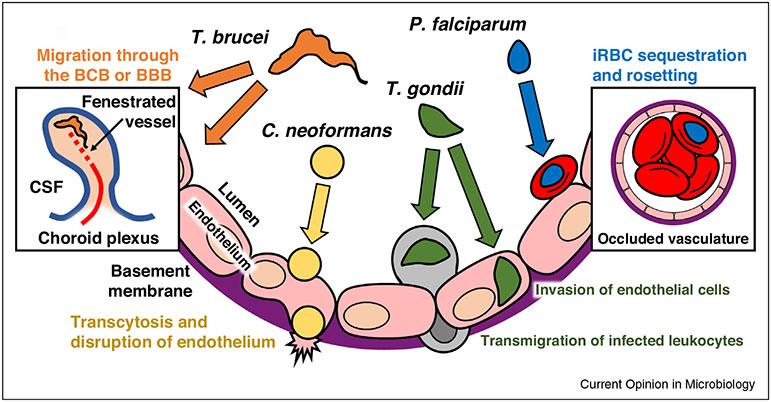Figure 1.
Eukaryotic pathogens utilize a diverse range of strategies to migrate from the blood to the CNS. A schematic shows the cross section of a blood vessel of the BBB and potential pathways of CNS entry for four global pathogens. T. gondii can invade and replicate in brain endothelial cells and may undergo transendothelial migration either as a free tachyzoite or inside an infected leukocyte. Cerebral malaria is associated with sequestration of P. falciparum-infected red blood cells (iRBCs) in the brain microvasculature and binding of iRBCs to uninfected RBCs in a process known as rosetting. This leads to the obstruction of blood flow and may contribute to breakdown of the BBB and vascular leakage. T. brucei likely crosses the BCB via fenestrated vessels inside the choroid plexus, followed by trafficking to the meninges. Some evidence suggests that enhanced vascular permeability induced by host inflammatory responses may allow the parasite to directly cross the BBB. C. neoformans can cytoadhere to endothelium, often at narrow points in the blood vessels and undergo transcytosis. Endothelial cells that internalize yeast lose their structural integrity, resulting in cell stress and injury.

